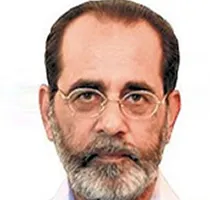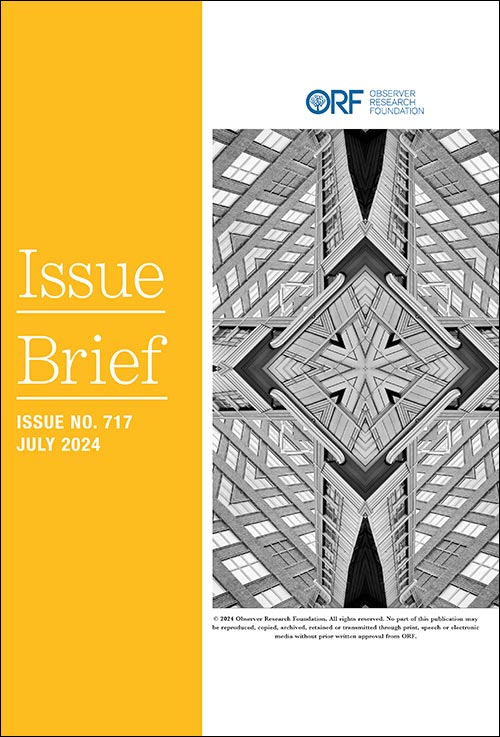
As the 21-day lockdown announced on 24 March neared the end on 14 April, Prime Minister Modi delivered his much-awaited address. Expectedly, he extended the lockdown by another 19 days till 3 May. Limited relief in districts where the disease is in check may be allowed after a week. Guidelines regarding these are yet to be issued.
The extension of the lockdown was inevitable. Even after 21 days, the spread of COVID-19 has continued, both horizontally and vertically. From 128 districts out of 729 that had confirmed cases on 24 March, the horizontal spread now covers 375 districts. The pace has continued to reflect a doubling rate of four days since 14 March when India crossed the 100 cases threshold. The last doubling from 3,200 cases on 5 April to 6,400 cases took five days and at these rates, the number of cases would exceed a lakh by the end of the lockdown. The major lacuna has been testing which has picked up only during the last ten days to about 18,000 tests a day. However, the number of tests so far (2.3 lakh against the over 10,000 positive cases) are about a fifth of what was needed to provide a better picture of both the vertical growth and its likely direction.
A change in Modi’s approach
This time there were two key differences compared to Modi’s address three weeks ago announcing the lockdown. First, it was preceded by widespread consultation with the chief ministers. This reflected an acceptance of India’s federal character and the fact that the district is the fundamental unit of administration. Any scheme or plan, in order to be implemented effectively on the ground across the country, needs a two-way up-down information flow through certain well-established channels.
The extension of the lockdown was inevitable. Even after 21 days, the spread of COVID-19 has continued, both horizontally and vertically.
The second difference was the shift from the “jaan hai jahaan hai” sentiment to the “jaan bhi aur jahaan bhi” objective, announced after the meeting with the state chief ministers on 11 April. Once again, it reflected an acceptance that while a national lockdown had been a top-down decision announced without wide consultations and with a mere four-hour notice, it was not the solution and a staggered relaxation of the lockdown needed to be managed by each state government looking at the situation in each district. In coming days, the new guidelines will begin to delegate the responsibility of staggered relaxation to the state governments. Modi realised that even extending the lockdown was also better done, following consultations with the chief ministers of various states.
The “jaan hai, jahaan hai” sentiment gave rise to a binary approach. Those supporting a lockdown became labelled as supporters of health security while those who asserted that a lockdown would only kill the poor person saved from coronavirus though starvation caused by economic hardship were believers in economic security. The binary choice is a false one as it blunts critical thinking. It was convenient for the central government because instead of adopting an analytical data driven approach, it was simpler to motivate people by evoking the image that India was fighting a “war” and victory demanded an unquestioning rallying around by the population. It fitted well with Modi’s governance style. The downside of it was that it also activated the panic virus which spread far from rapidly than the coronavirus resulting in the unforeseen challenges (keeping essential services running, reverse migration, economic hardship of the vulnerable sections, etc.) and fumbling policy responses.
Those supporting a lockdown became labelled as supporters of health security while those who asserted that a lockdown would only kill the poor person saved from coronavirus though starvation caused by economic hardship were believers in economic security.
The reality is that India had been slow in developing its responses. India’s lead time was the month of February during which India had only three cases limited to Kerala, all of whom recovered. But that opportunity was squandered because of lack of coordination within government both at the Centre and States, mixed messaging particularly by the ICMR, absence of a national policy and task force which mean that priorities and action points remained ill-defined and fuzzy. The 21-day lockdown was intended to extend the lead time for ramping up medical preparedness because Modi knew fully well that the abysmal state of the health infrastructure in India would be overwhelmed very quickly unless there was a war-like approach to enforce suppression.
On 14 April, it became clear that suppression had yet to show a conclusive downturn. More time was needed to build the health infrastructure as well as the database so the planners could get ahead of the curve. And so, the lockdown needed to be extended.
Changing the governance model
Before the national curve can be flattened, each state has to flatten its curve and the credit for it will accrue to state governments that demonstrate effective governance, use technology tools, employ grass roots outreach and have better information flows with a motivated administrative machinery. The Centre’s role will be providing the fiscal space and at best, access to scarce equipment like PPEs and masks. Modi now understands (perhaps reluctantly) that if there is credit for successfully curbing COVID-19, it will have to be shared with state chief ministers whether from BJP or other parties. Note that now the models for tracking and controlling spread being talked of are the Bhilwara (Rajasthan) model, the Pathanamthitta (Kerala) model and the Agra (UP) model; it is no longer the one size fits all model designed in Delhi.
This is equally true for managing the lockdown exit. The economic machine of the state was brought to a shuddering halt on the midnight of 24-25 March. The resulting demand shock and the supply squeeze sparked a series of fallouts including highlighting the risks of a crisis in some sections of the financial sector where money circulation has slowed down exposing unsustainable debts burdens. The support needed for the informal sector of the economy in terms of welfare, food and direct benefit transfers is very different from the stimulus and tax breaks needed for the organised sector. It is clear that the economic engine cannot be kickstarted as simply as it was switched off. And therefore, managing the exit out of the economic lockdown has to be gradual and fine-tuned, but will require a high level of coordination between the Centre and the states, with the latter taking up a major share of the management.
The models for tracking and controlling spread being talked about are the Bhilwara (Rajasthan) model, the Pathanamthitta (Kerala) model and the Agra (UP) model — it is no longer the one size fits all model designed in Delhi.
The fight against COVID-19 has just begun. It will continue over time. It is possible that in some areas, gradual relaxation might lead to a spike in infections leading to a re-imposition of restrictions. This process could take months or even a year till effective vaccines and therapeutics are available. Even then, the story doesn’t end. Viruses have a tendency to mutate and sometimes become endemic in some societies. We have seen this with the H1N1 which continues to afflict India after the initial outbreak nearly a decade ago. Casualty figures have averaged over a thousand a year and some years have been difficult, the worst year being 2015 when India had more than 42,000 infectious cases and nearly 3,000 people died. Just last January, six Supreme Court judges tested positive for H1N1.
Even as India weathers the current crisis, the long-term challenge for the government will be to build a pandemic resistant infrastructure so that artificial binaries between health security and economic security are avoided and we are better prepared in future.
The views expressed above belong to the author(s). ORF research and analyses now available on Telegram! Click here to access our curated content — blogs, longforms and interviews.




 PREV
PREV


.png)